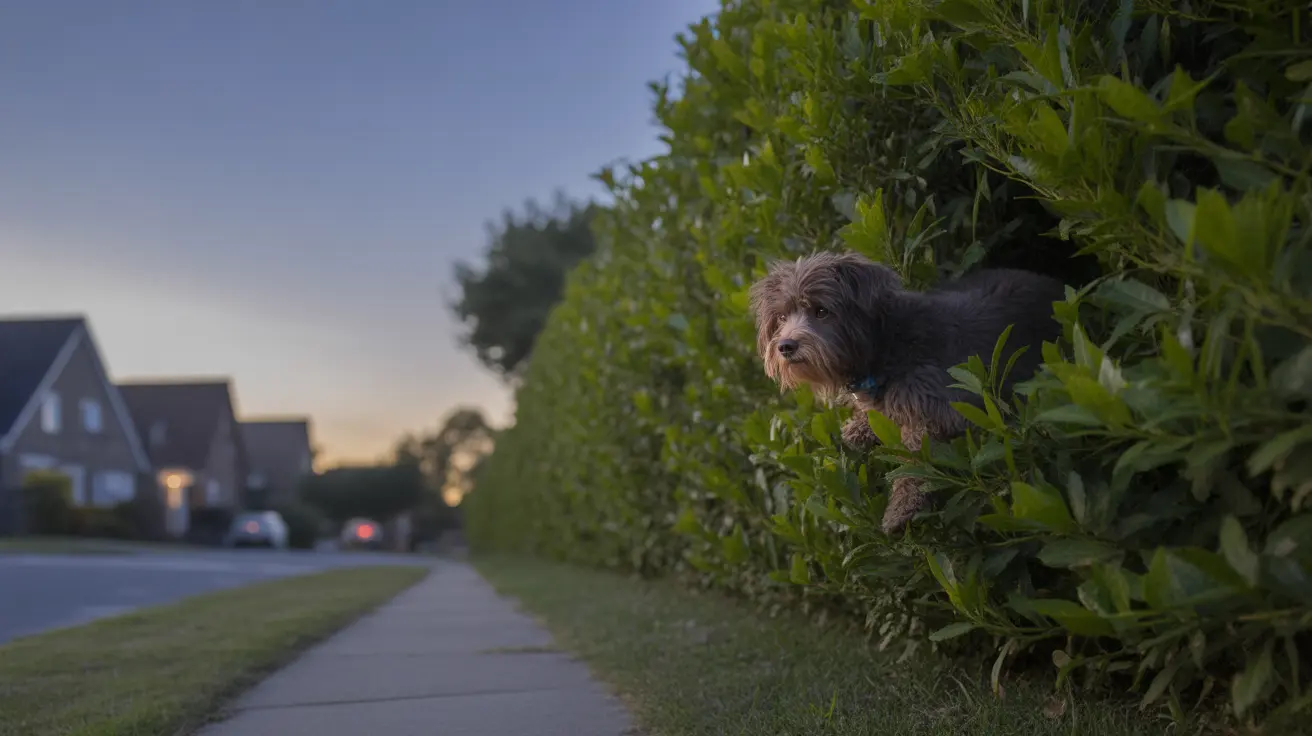A heartwarming rescue story from Mission Viejo, California demonstrates how modern technology is revolutionizing pet recovery efforts. The city's animal control services recently utilized thermal drone pet recovery technology to successfully locate and reunite a lost dog with its worried owner, showcasing the growing effectiveness of aerial search methods in animal rescue operations.
This successful mission highlights the increasing adoption of drone technology by animal control agencies across the country. As pet parents face the devastating experience of losing a beloved companion, innovative solutions like thermal imaging drones are providing new hope and dramatically improving success rates in pet recovery efforts.
How Drones Are Transforming Lost Dog Drone Search Operations
Traditional search methods for missing pets often involve ground teams, volunteers, and lengthy searches that can take days or weeks. However, the Mission Viejo case demonstrates how lost dog drone search technology can expedite the process significantly. Equipped with thermal imaging capabilities, these specialized drones can cover vast areas quickly while detecting heat signatures that might be invisible to the human eye.
The technology works by identifying the unique thermal signature of warm-blooded animals, making it particularly effective for locating pets that may be hiding in dense vegetation, under structures, or in areas difficult for ground searchers to access. This advancement represents a significant leap forward in animal rescue capabilities.
Benefits of Thermal Imaging Drone for Pets Recovery
The advantages of using thermal imaging drones for pets extend far beyond speed and efficiency. These aerial tools can operate during low-light conditions when many lost pets are most active, such as dawn and dusk. The quiet operation of modern drones also reduces stress on already frightened animals, preventing them from fleeing further when rescuers approach.
For pet owners, drone-assisted searches offer peace of mind through comprehensive coverage of search areas. The birds-eye view allows operators to systematically scan neighborhoods, parks, and rural areas that might take ground teams hours or days to cover thoroughly.
Understanding Drone Search and Rescue Pets Technology
Modern drone search and rescue pets operations utilize sophisticated thermal cameras that can detect temperature differences as small as 0.1 degrees Celsius. This sensitivity allows trained operators to distinguish between different heat sources and identify potential pet locations even in challenging environmental conditions.
The technology is most effective during cooler weather conditions when the temperature contrast between the animal and its surroundings is more pronounced. Operators can adjust camera settings and flight patterns based on terrain, weather conditions, and the specific circumstances of each search.
Best Practices for Drone Pet Recovery Services
Successful drone pet recovery services follow established protocols to maximize effectiveness. These include conducting searches during optimal weather conditions, maintaining appropriate flight altitudes to avoid startling animals, and coordinating with ground teams for safe recovery once a pet is located.
Professional operators also consider factors such as the pet's behavior patterns, likely hiding spots, and environmental conditions when planning search routes. This strategic approach significantly improves the chances of successful recovery.
The Future of Drone Pet Tracking Technology
The Mission Viejo success story represents a growing trend in animal control and rescue operations nationwide. As drone pet tracking technology continues to advance, we can expect to see more agencies adopting these tools as standard equipment for pet recovery missions.
The integration of artificial intelligence and improved thermal imaging capabilities promises even greater success rates in the future. These technological advances will make drone-assisted pet recovery more accessible and effective for communities of all sizes.
Frequently Asked Questions
- How do thermal imaging drones help find lost dogs and other pets?
Thermal imaging drones detect the heat signatures of warm-blooded animals like dogs, allowing operators to locate pets quickly even in low light, dense vegetation, or difficult terrain where traditional searches struggle.
- When is the best time and weather to search for a lost pet using a thermal drone?
The most effective searches occur in cool, overcast weather or during early morning and evening hours, especially in late fall through early spring, when temperature contrasts between the pet and environment are highest.
- What are the advantages of using drones over ground search teams in finding lost pets?
Drones cover large and inaccessible areas faster, use thermal cameras to locate heat signatures, reduce stress on the animal by quiet observation, and lower search costs by minimizing labor and time compared to traditional ground efforts.
- Are drone search services available to pet owners, and what costs are involved?
Many communities offer drone-assisted pet recovery either as paid services or volunteer efforts. Fees vary—for example, some local searches charge around $150, while others may provide assistance free or for small operational costs.
- What limitations or challenges affect the use of thermal drones in pet recovery?
Effectiveness can be reduced by weather conditions like wind, rain, or fog, summer heat diminishing thermal contrast, privacy and regulatory restrictions, and the need for certified, trained operators to conduct safe and legal flights.
Conclusion
The successful deployment of thermal drone pet recovery technology by Mission Viejo animal control services marks an important milestone in pet rescue operations. This innovative approach not only reunited one family with their beloved companion but also demonstrates the potential for technology to transform how we approach pet recovery efforts.
As more communities recognize the benefits of drone-assisted searches, pet owners can take comfort knowing that advanced tools are available to help bring their furry family members home safely. The future of pet recovery looks brighter with these technological advances leading the way.






